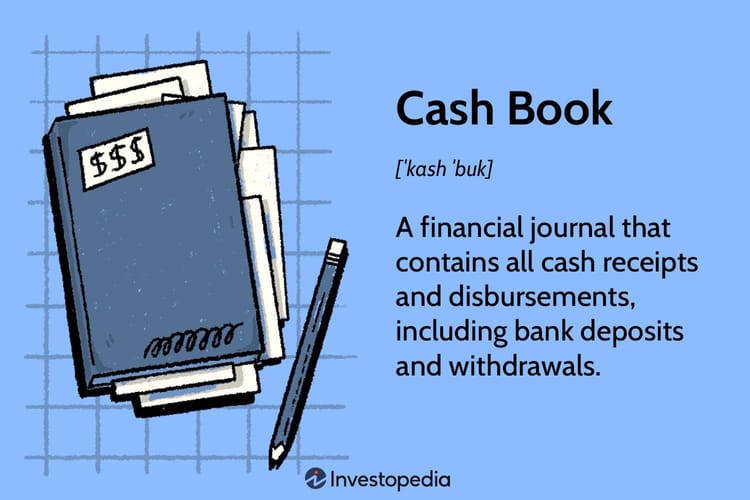Single Entry Bookkeeping System

Single Entry System of Bookkeeping
The Single Entry System of Bookkeeping is a simplified method of recording financial transactions, primarily used by small businesses due to its ease of maintenance and minimal requirements. Unlike the double-entry system, it does not follow a strict set of rules and principles, making it less complex but also less accurate in some aspects.
Key Features
- Cash Book: The cash book is the primary record under this system, documenting all cash receipts and payments. Both personal and business transactions are included in this single book.
- Personal Accounts: Only the personal accounts of creditors and debtors are maintained. Real and nominal accounts are ignored.
- Original Vouchers: These play a crucial role in gathering transaction details such as amount, date, discount, and parties involved.
- No Fixed Rules: There are no fixed rules for determining profit or preparing financial statements, leading to variations in application from one business to another.
- Estimation of Profit or Loss: Profit or loss is estimated based on available information, not ascertained exactly.
- Final Accounts: Preparing final accounts is challenging as real and nominal account information is missing. Instead, a Statement of Affairs is prepared.
Advantages
- Simplicity: Easy to maintain, especially for small businesses.
- Minimal Requirements: Requires fewer records and less detailed bookkeeping.
- Cost-Effective: Less time-consuming and cheaper to implement compared to the double-entry system.
- Easy to Calculate Profit: Profit calculation under the single-entry system is straightforward. As it relies on the income statement, determining profit and loss at any given time is simple.
Disadvantages
- Inaccuracy: Due to the lack of comprehensive records, the financial position of the business may not be accurately reflected.
- Limited Use: Not suitable for larger businesses or those requiring detailed financial analysis.
- Estimations: Profit or loss figures are estimates, not exact values.
- Unacceptable for Tax Purposes: The single-entry system has incomplete and inaccurate financial records. Therefore, tax authorities do not accept these accounts for tax assessment purposes.
Single Entry System Example
Consider a small retail shop using the single entry system. The owner records all cash transactions in the cash book and maintains personal accounts for suppliers and customers. At the end of the year, the owner estimates the profit by comparing the total sales recorded in the cash book with the total expenses paid.
Cash Book Entries
| Date | Description | Income | Expense | Balance |
|---|---|---|---|---|
| 02/12/2024 | Balance b/d | Rs. 50,000 | Rs. 30,000 | Rs. 20,000 |
| 04/12/2024 | Wages paid | Rs. 5,000 | Rs. 15,000 | |
| 08/12/2024 | Electricity bill paid | Rs. 5,000 | Rs. 10,000 | |
| 12/12/2024 | Stock Purchase | Rs. 9,000 | Rs. 1,000 | |
| 24/12/2024 | Sales | Rs. 30,000 | Rs. 31,000 | |
| 27/12/2024 | Bank Deposit | Rs. 15,000 | Rs. 46,000 | |
| 29/12/2024 | Balance c/d | Rs. 95,000 | Rs. 49,000 | Rs. 46,000 |
In the given cash book example, each transaction for the month is recorded as a single entry, covering all the business’s income and expenses. These balances are then carried forward to the next month, meaning that the subsequent month begins with the cumulative totals of the previous month's income and expenses. This ensures continuity and simplifies the bookkeeping process.
FAQs:
What is the difference between single and double-entry accounting?
- Single-entry accounting records each transaction with a single entry, typically in a cash book, focusing on simplicity and tracking cash flow. In contrast, double-entry accounting requires dual entries for every transaction, maintaining a balance in debits and credits, providing a more comprehensive view of financial transactions and their impact on the business
What is the single-entry example?
- In single-entry accounting, imagine you run a lemonade stand. You record the money you receive (sales) in a notebook. If you spend money on lemons, you write that down too. It's like a simple checklist, tracking what comes in and goes out, but without detailed balances like in a bank statement.
What are the two types of single-entry?
- The two types of single-entry accounting are the cash method and the simple or incomplete record method. In the cash method, you record transactions when money is received or paid. The simple record method involves noting only the basic details of transactions without the complexities of formal double-entry accounting.
Who uses a single entry?
- Small businesses, freelancers, and those with straightforward transactions often use single-entry accounting due to its simplicity and ease.
We hope that you like this content and for more such content Please follow us on our social site and YouTube and subscribe to our website.
Manage your business cash flows and payable/receivables using our Bahi Khata App.




Comments ()